National Depression Glass Association
Preserving America's Glass Manufacturing Heritage
Stretch, that "Other" Iridescent Glass
by Helen and Roberts Jones
Webmaster's NOTE: Additional photos related to this article are found on a separate page.
Stretch glass is not considered art glass and it doesn't really fall under the definition of Carnival glass or Depression glass. It's that "other" iridescent glass that's in a collectible area all its own.
This beautiful iridescent glass was made from about 1916 until the early 1930s by at least nine American glass companies. Of course, it wasn't advertised as "Stretch Glass" by its manufacturers. That was a term coined and used by authors and collectors when stretch glass first started being written about and collected as a separate and distinct type of American-made glassware. "Rainbow," "Crackle," Lustre," "Cobweb" and "Iridescent" glass were some of the terms used to describe stretch glass in company advertisements.
In 1916 a trade journal wrote about Northwood's new iridescent line of glassware. It's described as having a "Tiffany finish." It's very probable that stretch glass was offered as an affordable alternative to the beautiful and expensive iridescent art glass pieces sold by companies such as Steuben and Tiffany.
Stretch glass was either pressed or blown into a mold. No pieces were free-blown; they will not have a pontil mark. This glass was sprayed with metallic salts while hot and then reheated to achieve an iridescent effect.
Most items were then hand worked with paddles, crimpers or other tools to a desired shape. This hand working would stretch the iridescent surface of the glass and give a "cobweb," "crackled" or "onion skin" appearance to the surface that had been stretched.
Note figures 1 and 2 for examples of this stretch effect which, by the way, collectors call "stretch marks"!
Not all pieces had to be reshaped after they came out of the mold. They were fully functional in their original form. These pieces will not have noticeable "stretch marks" by will have a satin iridescent finish. One such piece is the candleholder in figure 3. The covered candy dishes in figures 4 and 5, and the puff box in figure 6 are also examples of items that needed little or no reshaping.
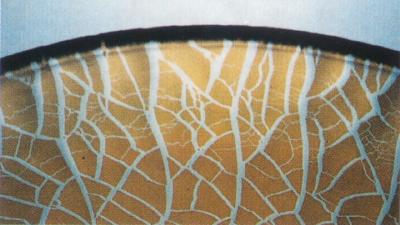 Figure 1. Close-up of Imperial Rose Ice "candlebowl" | 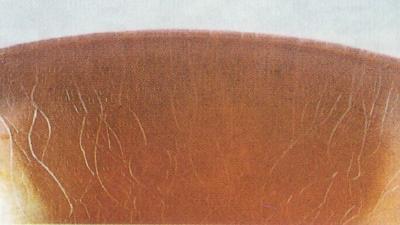 Figure 2. Close-up of Imperial Pearl Amethyst #42 bowl |
The five American companies that produced the most stretch glass were the Diamond Glass-Ware Company, Fenton Art Glass Company, Imperial Glass Company, H. Northwood & Company and the United States Glass Company. Central Glass Works, Jeannette Glass Company, Lancaster Glass Company and Vineland Flint Glass Works also made small but interesting lines of stretch glass.
Unlike carnival glass, which is noted for its many heavy and ornate patterns, stretch glass pieces have very little pattern. They are often very plain. If they do have a pattern it's usually limited to simple ribs, panels, rings or an optic. Figure 7 is a creamer showing a simple ring pattern.
Stretch glass was not made in complete dinnerware sets such as those offered in Depression glass. A small amount of tableware was made: luncheon plates (fig. 8), sherbets and liners (fig. 9), and a few very hard-to-find cups and saucers (fig. 10). Some of the glass companies made beverage sets consisting of a pitcher and tumblers. Shown in one tumbler (fig. 11) with an applied cobalt blue handle. The pitcher would have had a similar applied handle. A varied array of serving pieces was available. Some large serving plates, fruit bowls (fig. 12), mayonnaise bowls, and underplates, nut dishes, sugars and creamers such as the one already mentioned in figure 7. Candy dishes (figs. 4, 5, and 25) were also quite popular.
Floral bowls (figs. 13 and 14) and candleholders (figs. 3, 15, and 16) were offered in many different style and size choices. Imperial Glass Company (fig. 17) and Diamond Glass-Ware Company (fig. 18) each made a unique item combining the bowl and candleholder in one piece.
Vases were also big sellers. Two styles shown are a tall cobalt blue vase (fig. 19) that combines crackle with the stretch effect. Figure 20 is a fan vase with dolphin handles. Fenton Art Glass Company offered an extensive line of bowls, plates, vases and candleholders featuring dolphin handles. Figure 21 is a basket that would serve nicely to hold a floral arrangement.
Cologne bottle and puff boxes (note the one already mentions in figure 6) were made in stretch glass. Smoking items such as cigarette boxes, cigarette jars and ashtrays were offered. Even light shades (fig. 22) and boboches for candleholders (fig. 23) can be found.
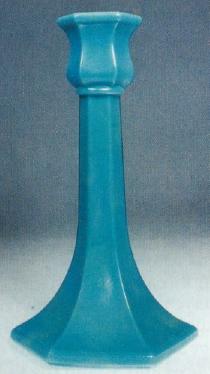 Figure 3 Northwood Jade Blue 8.5" #657 candlestick |
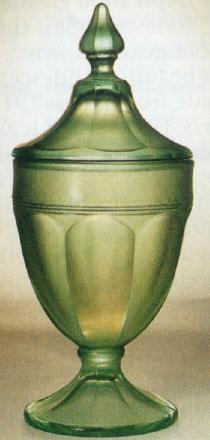 Figure 4 Diamond Green 1lb. candy jar |
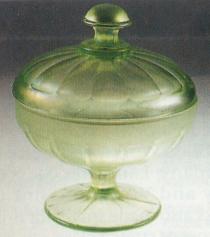 Figure 5 Fenton Florentine Green 1 lb. #643 bonbon 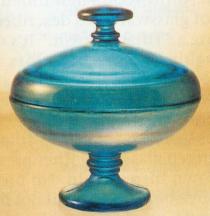 Figure 6 Fenton Celeste Blue 5.25" high #743 puff box |
Because of the expense of having glass molds manufactured, companies tried to make as many different pieces out of a mold as they possible could. A bowl could be straight sided as it came out of the mold or it could be cupped in, rolled over, flared, flattened into a plate or even pulled out into a vase form. Edges could also be crimped and fluted. The sides could be turned up to make the shape of the piece square or pulled out at the ends to make the piece oval. Many of these same technique could be used to reshape compotes and vases.
Figure 24 shows three different forms of the same sherbet mold. The white sherbet (left) is fairly much the same as it was removed from the mold. The marigold sherbet (right) has been flared out to a wider shape. The blue sherbet (center front) has been pulled out to form a small oval compote. This particular piece was not a production items (shown in the catalogs) and is known as a whimsey. Because so few of these were made, the price paid by a collector for one would be dramatically higher than the price paid for the readily available common sherbet.
Stretch glass colors are varied. The most common colors are transparent blue (figs. 6, 11, 15, 16, 18, and 24), green (figs. 4 and 5), yellow (fig. 23), and white (figs. 21 and 24). Many of the companies made these same colors. Note the captions with each picture for company color names.
Other transparent colors seen are pink (figs. 7, 10, and 20), marigold (figs. 1, 9, 17 and 24), teal (fig. 8), yellow-orange (fig. 13), ruby, cobalt blue (fig. 19), purple (fig. 2) and greenish-brown (fig. 25). Some stretch glass was made in opaque colors such as the yellow bowl in figure 12 and the blue candleholder and bowl in figure 3 and 17. Numerous other colors, both transparent and opaque, can be found. Unfortunately there are too many to list or picture in this article.
Some stretch glass was also decorated. It may have been done by the company or by a separate decorating company. Enamel flowers, human figures and other decorations were painted on some of the pieces of glass.
The value of stretch glass, like any other antique or collectible, is subject to the rule of supply and demand. Many plates, bowls, compotes and vases are quite common depending on color, size and form. They may sell for as low as $20 to $30. Some of the harder to find items include colognes, puff boxes, cigarette boxes and holders, pitchers, guest sets, whimseys and any common piece that happens to be in a scarce shape or color. Certain of these pieces may be worth several hundred dollars. Some colors are more desirable than others. Cobalt blue is always in demand as are any of Fenton's or Imperial's red pieces. Wisteria (purple) and Tangerine are also sought-after colors.
If you would like more information about stretch glass, you are welcome to join the Stretch Glass Society. It is a national organization that publishes an informative quarterly newsletter and has a combined annual meeting, convention, and show and sale in a different location each year. The Society also hosts a web site open to everyone that give additional information about the colors and shapes of stretch glass pieces and a detailed account of the making of a pieces of stretch glass. It also offers a list of the available books about stretch glass. For Society membership information and further details about conventions, please call (904) 471-7703 or visit the web site at www.stretchglasssociety.org.
We hope we've made you interested enough to take a closer look at stretch glass on your visits to the antique malls and shows. Perhaps you'll find room in your collection for a few pieces of the "other" iridescent glass!
Webmaster's Note: The article is based on a presentation given at the 2000 West Virginia Glass Gathering. The authors can be reached at (703) 368-8452 or bglances@aol.com